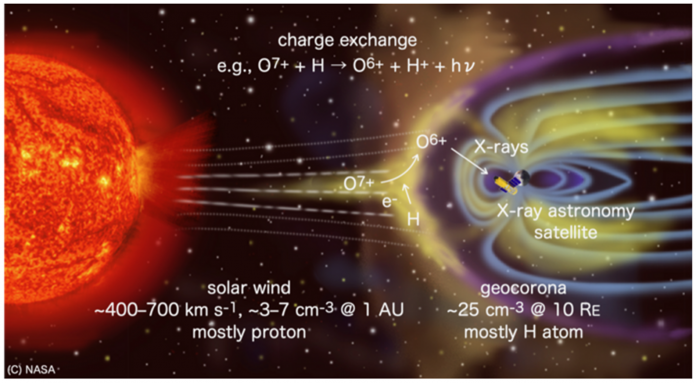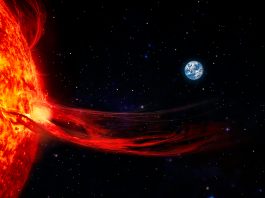Researchers from Tokyo Metropolitan University have used numerical methods to model the variations observed in soft X-ray signals detected by X-ray satellites.
To compare, they analysed data from the Suzaku telescope and compared it with the modelling of solar winds interacting with the upper parts of our atmosphere. They succeeded in capturing how soft X-ray signals varied with the orbital motion of the satellite, with implications for how predictions can be made for future satellite experiments.
A corresponding paper, ‘Modeling of geocoronal solar wind charge exchange events detected with Suzaku,’ was published in Publications of the Astronomical Society of Japan.
The complexities of measuring solar wind
In the 1990s, the German orbital X-ray telescope ROSAT began detecting significant variations in signals in the soft X-ray part of the spectrum that lasted a day or so. These were similar to the copious flux of soft X-rays from the comet Hyakutake discovered around the same time.
It was proposed that these were due to solar wind, fluxes of charged particles arriving from the Sun, and how they interact with neutral ions in the upper extremities of our atmosphere or the geocorona. More detailed observations in the 2000s confirmed the tell-tale spectra of these events, known as solar wind charge exchange events (SWCX), and the mechanism itself was widely accepted.
However, modelling how solar wind gives rise to the measurements taken by orbital telescopes proved much more difficult. It requires successfully capturing the arrival of solar wind events, how the charged particles interact with neutral atoms, and how that affects the magnetosphere. Moreover, how these phenomena combine must be analysed to give rise to the variation in signals observed over time and space by the satellites.
Producing a successful model
The team, led by Associate Professor Yuichiro Ezoe, has brought these aspects together to produce a model that can reproduce how soft X-ray signals vary over time.
The team’s focus was on data from Suzaku, an X-ray telescope satellite launched in 2005 by the Japan Aerospace Exploration Agency. In contrast to other satellites, Suzaku lies in a lower orbit, allowing it to observe the polar cusps of the magnetosphere, where solar winds are being strongly bent away. A highlight of the team’s work is not only the wide range of astrophysical events they are able to bring together but how it may be mapped onto accurate data.
The model showed excellent correspondence with experimental data, reproducing the signal observed up to a factor of two, an impressive feat in the field. Furthermore, they could produce particularly strong variations in the signal when the satellite’s line of sight aligned with the polar cusps. There were some notable exceptions, such as when a major geomagnetic storm was observed.
Nevertheless, successful reproduction of the variations holds significant promise for predicting the outcomes of the next generation of soft X-ray observations in space.









